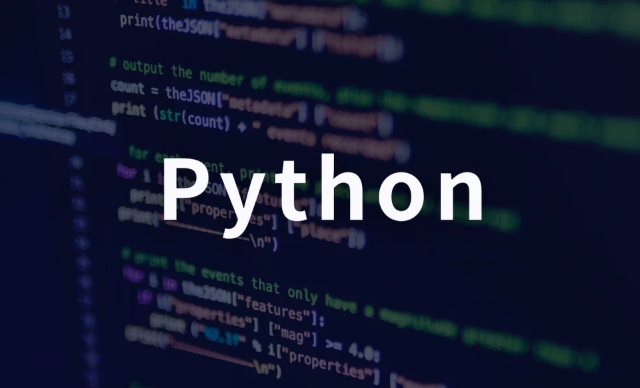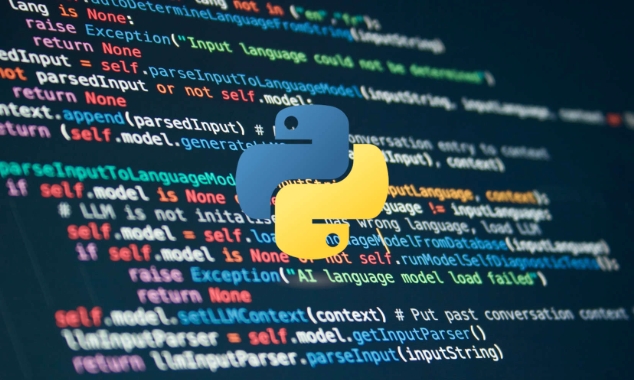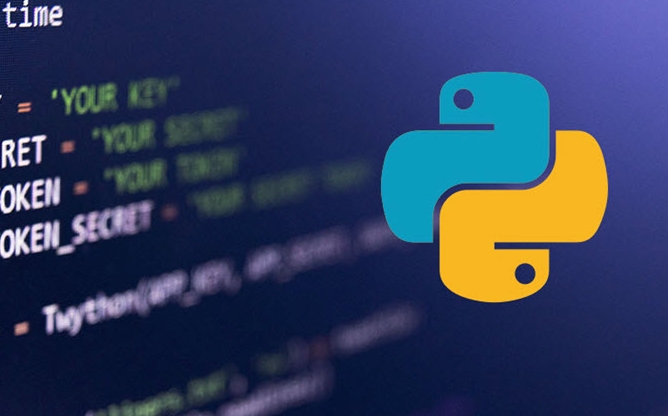In Python, function argument transfer is "passing object reference", that is, 1. For mutable objects (such as lists and dictionaries), in-situ modifications (such as append, assignment slice) within the function will directly affect the original object; 2. For immutable objects (such as integers, strings), the original object cannot be changed in the function, and reassigning will only create a new object; 3. The parameter passes a copy of the reference. If the variable is rebinded in the function (such as lst = [...]), the connection with the original object will not be affected without affecting the external variable. Therefore, modifying mutable objects affects the original data, while immutable objects and reassignment do not, which explains why the list is visible externally after modification within the function, while integer changes are only locally.

In Python, the "pass parameter" mechanism is not a simple "pass value" or "pass reference" , but to be more precise: "pass object reference" . This means:

- If it is a mutable object (such as lists, dictionaries), modifications within the function will affect the original object, which looks like "reference pass".
- If it is an immutable object (such as integers, strings, and tuples), the original object cannot be modified in the function, which is like "value transfer".
The following is a clear example to illustrate the performance of this "reference transfer":
? Example: List (mutable object) - similar to "pass by reference"
def modify_list(lst):
lst.append(4)
print("Inside function:", lst)
my_list = [1, 2, 3]
print("Before function call:", my_list)
modify_list(my_list)
print("After function call:", my_list)Output:

Before function call: [1, 2, 3] Inside function: [1, 2, 3, 4] After function call: [1, 2, 3, 4]
? illustrate :
my_list is a list (mutable object). When passing in a function, lst is a reference to the same list object. Therefore, modifications to lst (such as append ) in the function will directly affect the original list.
? Comparison: Integer (immutable object) - will not change the original value
def modify_number(x):
x = x 1
print("Inside function:", x)
num = 10
print("Before function call:", num)
modify_number(num)
print("After function call:", num)Output:

Before function call: 10 Inside function: 11 After function call: 10
? illustrate :
Integers are immutable objects. x = x 1 inside the function creates a new object, x points to the new value, but the original num is not affected.
? Key understanding points
- All variables in Python are references to objects.
- Function parameters pass a copy of the object reference (not the object itself, nor is it a completely independent value).
- Operations on mutable objects (such as
list.append()) will be applied to the original object. - If you reassign a value in the function (such as
lst = [...]), it will disconnect from the original object and no longer affect the original object.
?? Note: Reassignment vs Modify in place
def reassign_list(lst):
lst = [4, 5, 6] # Rebind, does not affect the original list print("Inside (reassign):", lst)
def mutate_list(lst):
lst[:] = [4, 5, 6] # Modify content in place to affect the original list# or use clear extend
print("Inside (mutate):", lst)
original = [1, 2, 3]
reassign_list(original)
print("After reassign:", original) # Output: [1, 2, 3]
mutate_list(original)
print("After mutate:", original) # Output: [4, 5, 6]? the difference :
-
lst = [4,5,6]: Let the formal parameters point to the new object without affecting the outside. -
lst[:] = [4,5,6]: Modify the content of the original object and you can see changes outside.
Summarize
- ? After variable objects such as lists and dictionaries are passed, modifying them in place will affect the original object, which will appear like "pass by reference" .
- ? Immutable objects (int, str, etc.) will not be modified within the function.
- ? Remember: Python is "pass by object reference" , not the kind of reference passing of C.
Basically that's it. By understanding this, you can avoid many pitfalls of function argument transmission.
The above is the detailed content of python pass by reference example. For more information, please follow other related articles on the PHP Chinese website!

Hot AI Tools

Undress AI Tool
Undress images for free

Undresser.AI Undress
AI-powered app for creating realistic nude photos

AI Clothes Remover
Online AI tool for removing clothes from photos.

Clothoff.io
AI clothes remover

Video Face Swap
Swap faces in any video effortlessly with our completely free AI face swap tool!

Hot Article

Hot Tools

Notepad++7.3.1
Easy-to-use and free code editor

SublimeText3 Chinese version
Chinese version, very easy to use

Zend Studio 13.0.1
Powerful PHP integrated development environment

Dreamweaver CS6
Visual web development tools

SublimeText3 Mac version
God-level code editing software (SublimeText3)

Hot Topics
 A Developer's Guide to Maven for Java Project Management
Jul 30, 2025 am 02:41 AM
A Developer's Guide to Maven for Java Project Management
Jul 30, 2025 am 02:41 AM
Maven is a standard tool for Java project management and construction. The answer lies in the fact that it uses pom.xml to standardize project structure, dependency management, construction lifecycle automation and plug-in extensions; 1. Use pom.xml to define groupId, artifactId, version and dependencies; 2. Master core commands such as mvnclean, compile, test, package, install and deploy; 3. Use dependencyManagement and exclusions to manage dependency versions and conflicts; 4. Organize large applications through multi-module project structure and are managed uniformly by the parent POM; 5.
 Building RESTful APIs in Java with Jakarta EE
Jul 30, 2025 am 03:05 AM
Building RESTful APIs in Java with Jakarta EE
Jul 30, 2025 am 03:05 AM
SetupaMaven/GradleprojectwithJAX-RSdependencieslikeJersey;2.CreateaRESTresourceusingannotationssuchas@Pathand@GET;3.ConfiguretheapplicationviaApplicationsubclassorweb.xml;4.AddJacksonforJSONbindingbyincludingjersey-media-json-jackson;5.DeploytoaJakar
 python property decorator example
Jul 30, 2025 am 02:17 AM
python property decorator example
Jul 30, 2025 am 02:17 AM
@property decorator is used to convert methods into properties to implement the reading, setting and deletion control of properties. 1. Basic usage: define read-only attributes through @property, such as area calculated based on radius and accessed directly; 2. Advanced usage: use @name.setter and @name.deleter to implement attribute assignment verification and deletion operations; 3. Practical application: perform data verification in setters, such as BankAccount to ensure that the balance is not negative; 4. Naming specification: internal variables are prefixed, property method names are consistent with attributes, and unified access control is used to improve code security and maintainability.
 css dark mode toggle example
Jul 30, 2025 am 05:28 AM
css dark mode toggle example
Jul 30, 2025 am 05:28 AM
First, use JavaScript to obtain the user system preferences and locally stored theme settings, and initialize the page theme; 1. The HTML structure contains a button to trigger topic switching; 2. CSS uses: root to define bright theme variables, .dark-mode class defines dark theme variables, and applies these variables through var(); 3. JavaScript detects prefers-color-scheme and reads localStorage to determine the initial theme; 4. Switch the dark-mode class on the html element when clicking the button, and saves the current state to localStorage; 5. All color changes are accompanied by 0.3 seconds transition animation to enhance the user
 Developing a Blockchain Application in Java
Jul 30, 2025 am 12:43 AM
Developing a Blockchain Application in Java
Jul 30, 2025 am 12:43 AM
Understand the core components of blockchain, including blocks, hashs, chain structures, consensus mechanisms and immutability; 2. Create a Block class that contains data, timestamps, previous hash and Nonce, and implement SHA-256 hash calculation and proof of work mining; 3. Build a Blockchain class to manage block lists, initialize the Genesis block, add new blocks and verify the integrity of the chain; 4. Write the main test blockchain, add transaction data blocks in turn and output chain status; 5. Optional enhancement functions include transaction support, P2P network, digital signature, RESTAPI and data persistence; 6. You can use Java blockchain libraries such as HyperledgerFabric, Web3J or Corda for production-level opening
 css dropdown menu example
Jul 30, 2025 am 05:36 AM
css dropdown menu example
Jul 30, 2025 am 05:36 AM
Yes, a common CSS drop-down menu can be implemented through pure HTML and CSS without JavaScript. 1. Use nested ul and li to build a menu structure; 2. Use the:hover pseudo-class to control the display and hiding of pull-down content; 3. Set position:relative for parent li, and the submenu is positioned using position:absolute; 4. The submenu defaults to display:none, which becomes display:block when hovered; 5. Multi-level pull-down can be achieved through nesting, combined with transition, and add fade-in animations, and adapted to mobile terminals with media queries. The entire solution is simple and does not require JavaScript support, which is suitable for large
 How to use Java MessageDigest for hashing (MD5, SHA-256)?
Jul 30, 2025 am 02:58 AM
How to use Java MessageDigest for hashing (MD5, SHA-256)?
Jul 30, 2025 am 02:58 AM
To generate hash values using Java, it can be implemented through the MessageDigest class. 1. Get an instance of the specified algorithm, such as MD5 or SHA-256; 2. Call the .update() method to pass in the data to be encrypted; 3. Call the .digest() method to obtain a hash byte array; 4. Convert the byte array into a hexadecimal string for reading; for inputs such as large files, read in chunks and call .update() multiple times; it is recommended to use SHA-256 instead of MD5 or SHA-1 to ensure security.
 python parse date string example
Jul 30, 2025 am 03:32 AM
python parse date string example
Jul 30, 2025 am 03:32 AM
Use datetime.strptime() to convert date strings into datetime object. 1. Basic usage: parse "2023-10-05" as datetime object through "%Y-%m-%d"; 2. Supports multiple formats such as "%m/%d/%Y" to parse American dates, "%d/%m/%Y" to parse British dates, "%b%d,%Y%I:%M%p" to parse time with AM/PM; 3. Use dateutil.parser.parse() to automatically infer unknown formats; 4. Use .d






